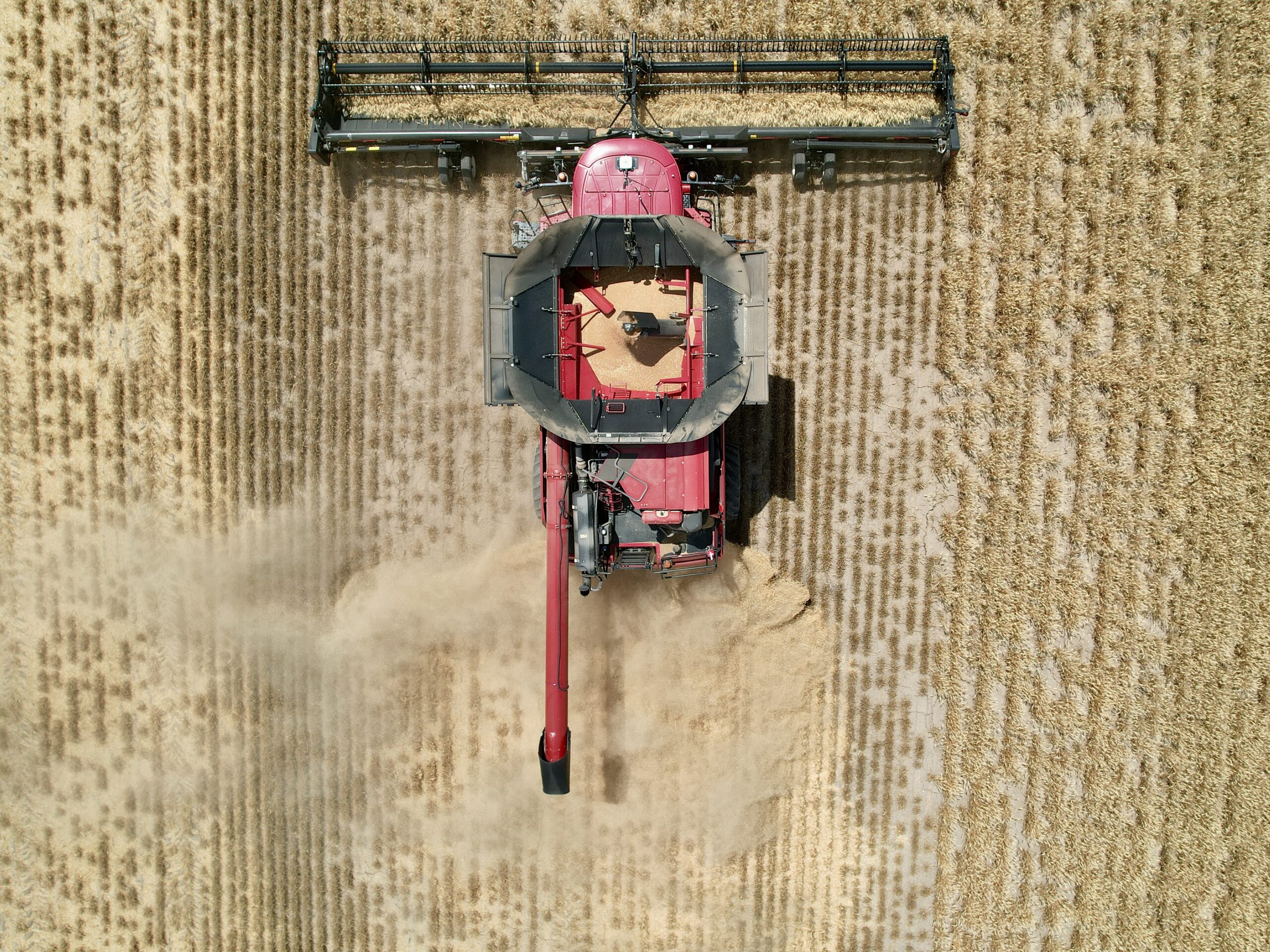
12 Jul Brian: Walking on broken glass
Plains, Kansas—The crew has finished up harvesting in Minneola, and we are eager to get moved to Plains, Kansas, as quickly as possible. This is the only time during the summer we have two jobs in such close proximity to each other. It’s a lot of work to pack up the house trailers for only a 50-mile move, so we decide to commute back and forth and leave them in Minneola.
For this move we don’t remove the dual tires from the John Deere combine, opting to drive it over to Plains to save time. Before I leave on my trip I swing by the gas station to fill up with fuel. I know everyone is feeling the pain at the pump this summer, but it’s taking an even bigger bite out of a custom harvester’s budget. The national average price for diesel is up over 75% from a year ago, and off-road farm diesel is the highest we have seen yet at $5.01 per gallon here. Most machines have a 250- to 300-gallon fuel tank. So when the pump clicks off at the preauthorized $1,000 limit, a second swipe of the credit card is required to finish your fill-up … for each piece of equipment, day after day. Our fuel budget could be confused with the GDP of a small country.
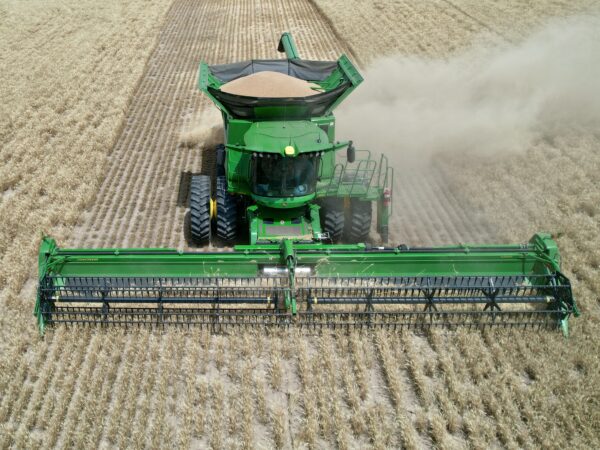

Not every day do you fill up your combine at the gas station. With so much card swiping, we may wear them out.
It’s a two-hour jaunt cross-country with the combine, and I average three miles per gallon for the trip. I always laugh at how fast 25 miles per hour can seem when you sit up so high. It’s quite the panoramic view when surrounded by all that glass, the ditches blurring by. Every mile I travel west takes me closer to the “extreme” drought-rated area of Kansas just beyond our fields. I finally arrive and jump down off the ladder. The ground crunches beneath my boots, almost as if I’m walking on broken glass. The grass is mostly brown, brittle and a little depressing. The upside? We unload equipment without fear of grass-stained jeans, and the rain gauge doesn’t get worn out. Always look for the positive.



We get to work right away after arriving in Plains. Views of gorgeous sunsets are easy here, the fields as flat and square as you will find anywhere.
Our fields here have only received 2.5 inches of rain this year. That’s not much moisture to grow a crop with, so expectations aren’t too high when it comes to yield. The sepia-toned surroundings may be bleak, but somehow green circles still riddle the horizon. Strobe lights bedazzle the night sky in every direction. Spin yourself around a few times in the darkness and it’s nearly enough to hypnotize you. Of course these flashing, green crop circles are not the work of little green space aliens, but rather the endless number of irrigation pivots in this area. At night each pivot has a flashing light, making it easy to confirm the system is properly operating from a distance. The frequency of those flashes, counted with a stopwatch, even indicate the amount of water being applied. The crops lucky enough to grow under this “on-demand rain” still look pretty good, but the dry land crops show the severity of the ongoing drought.
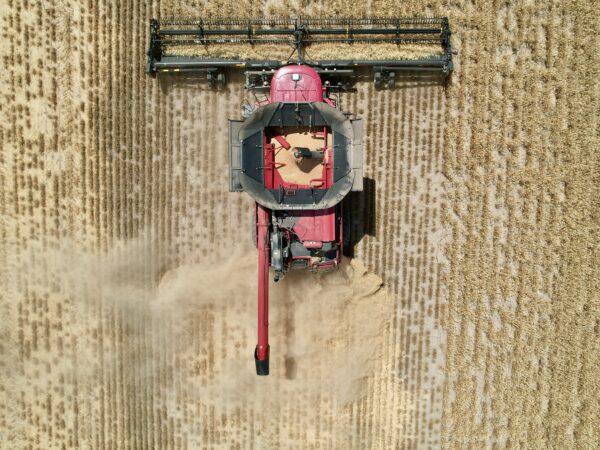


Looking down from above you can see just how poor the wheat grew in this area. It also allows you to really understand just how many irrigation circles there are here.
The crew gets an early start the next morning, and to our surprise the yield averages around 30 bushels per acre. The wheat is thin, spindly and short, allowing the combines to race back forth across square fields all day. We even have to wait on a truck to return from the elevator a few times, something we sadly haven’t experienced up until now. We actually set an all-time record for most acres harvested in a single day. Our hour-long commute back home means we get to bed after midnight, and everyone is exhausted after the long day.
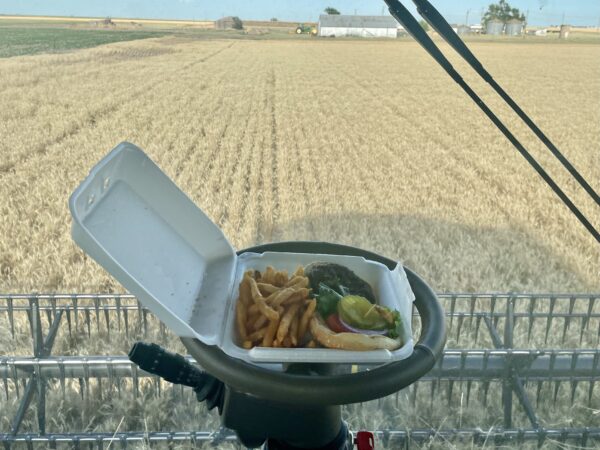
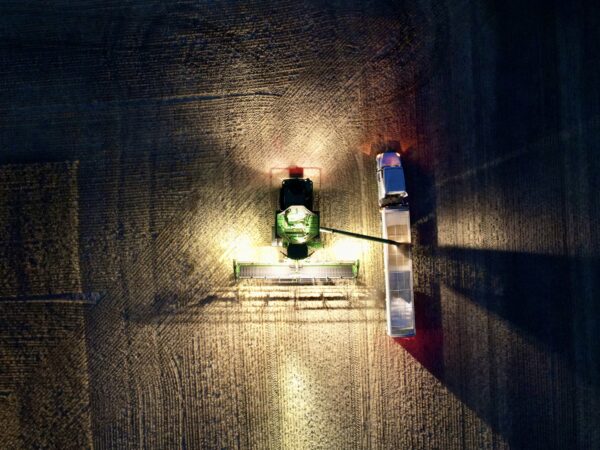
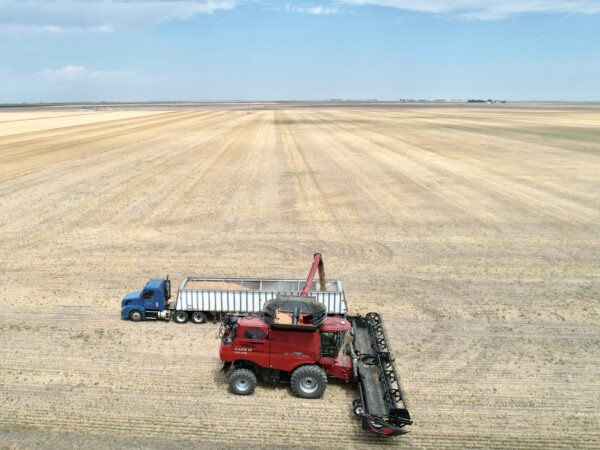
The men grab a meal from a local diner instead of having the cooks make a 100 mile round trip to feed us. For the first time this year both trucks are gone simultaneously and return to both combines with full hoppers.
Our small chance of morning rain showers unexpectedly turns into an all-day drizzle. After harvesting in 100-plus degree heat, the afternoon temperature only reaches the upper 50s. It seems ridiculous to need long sleeves after sweating under the blazing sun the past few weeks. This bizarre weather is short-lived, and a few days later we finish harvest our last field. It’s extremely windy and cleaning the machines in this heat is brutal. The light rains make the dust and chaff stick like glue, and cleaning seems to take forever. It’s a sweaty job, and most of us empty our water jugs before the day is over. From a safety standpoint we don’t enjoy loading equipment in the dark, but we do enjoy the cooler temperatures to end a very draining day.

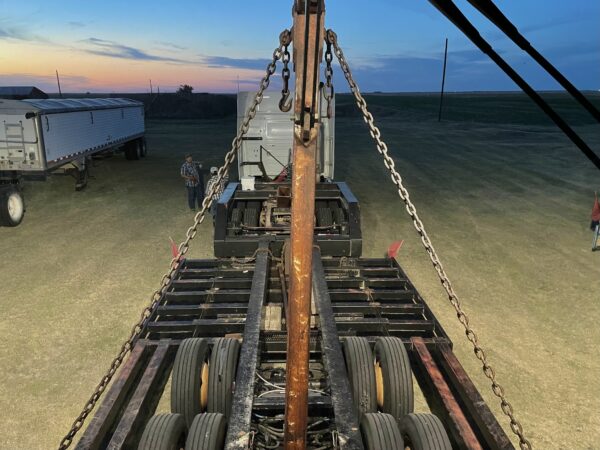

David, Cameron and Glen use the grinder to remove links and tighten the feeder house chain. It’s a hot, dirty job cleaning machines, taking so long that we end up finishing loading in the dark.
We doubt the grass is any greener on the other side, but the crew will cross the Kansas state line and pull up to Big Springs, Nebraska. This will be our 3rd stop in a row that is experiencing a severe drought. Factor in a large hail storm that swept over nearly half our acres, and we don’t really know what to expect. The last two years we were forced to bypass this area and head directly to South Dakota, so the crew is looking forward to harvesting in Nebraska once again.
Brian Jones can be reached at brian@allaboardharvest.com.
All Aboard Wheat Harvest is brought to you by ITC Holdings, CASE IH, Oklahoma Baptist Homes for Children, US Custom Harvesters Inc., Unverferth Mfg. Co. Inc., Lumivia CPL by Corteva Agriscience, Kramer Seed Farms, and High Plains Journal.
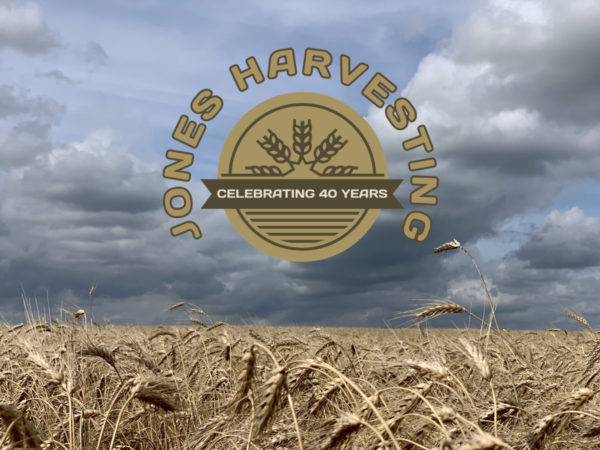

Sorry, the comment form is closed at this time.